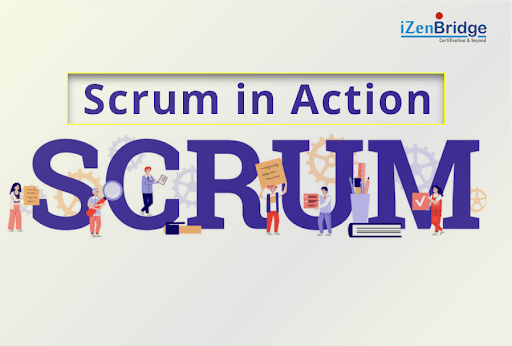

In Scrum one of the frequently asked questions is – is it a framework or methodology?
In Scrum based project management, team best knows how to solve the problem. They are self-organised for a goal instead of following defined task list. Thus rather viewing SCRUM as methodology, it is a framework for the SCRUM process.
The Scrum process is defined by:
Let’s learn how these 3 components work when Scrum is used in agile:
Scrum Team is supported by scrum master and product owner. Scrum mater is the coach to help the team to be productive and to reach at high performance level.
The product owner is the business representative and help the team to build a right product. The product owner owns the product backlog to convey the product vision. He is responsible to prioritise the backlog items as per the business value.
A sprint is the similar toiteration but it is time boxed maximum to 30 days. The sprint is started by sprint planning meeting – the first ceremony in the Scrum.
The product owner and team negotiate for the upcoming sprint work based on team capacity and business value. The product backlog is an important input during the meeting. And it is the prioritised list of product functionalities to ensure that team always works on the most valuable features first. Scrum Master facilitate the meeting.
During the last segment of the meeting team come up with the sprint backlog. The sprint backlog is the to-do activities that team will complete to deliver selected functionalities of product backlog. Sprint backlog is owned by the Scrum team.
After sprint planning meeting the execution of sprint is started. During the sprint, the scrum master work to prevent distractions so that team can focus on sprint goal. Product Owner is available to the team for requirement clarification. Team self-organise for the sprint activities, a daily ritual – 15 Minute daily stand up meeting helps the team to adapt in achieving goal. During daily stand-up each team member shares with others: what activities are done, what implements they faced and what they are planning to do today.
Task Board is taken as input in daily stand-up meeting where flow of work is visible and team discuss each of them.Task board shows all the sprint activities with their current state of progress and the possible states could be pending, ongoing, and done.Daily stand up is also facilitated by Scrum Master.
Sprint is time boxed, it helps the team to focus on work for the goal and they collaborate to develop the Increment. Increment is the collection of all features implemented and are ready to be consumed by the customer. Product Owner can take decision to deliver the increment to the customer thus increment is known as potentially shippable.
This increment is shown to all stakeholders, this is the third ceremony – Scrum Review. Product backlog is updated as a result of feedback received from the stakeholders. Sprint review is followed by another ceremony – Sprint Retrospective. The goal of retrospective is to inspect and adapt the process of next sprint execution based on what went well and what did not well in the sprint. Sprint retrospective helps in continuous improvements for the upcoming sprints. Sprint review and retrospective are also facilitated by the scrum master.
The product backlog can be updated continuously during the whole process of these ceremonies and sprint execution. A new item can be added, existing can be removed and items can also be re-prioritised anytime in product backlog.
A next cycle of sprint planning can be started after the sprint retrospective. And Scrum Master, Product and Scrum Team knit together again for the next iteration or sprint.
In conclusion, Scrum enable the team to build a product which is align to the vision and serves a framework to achieve it.